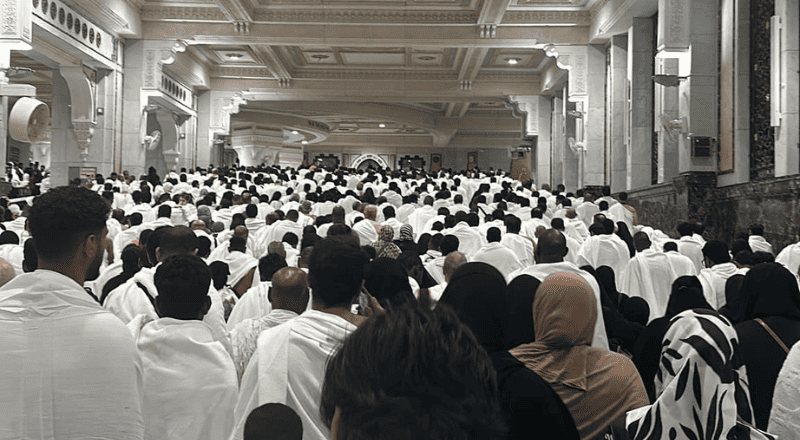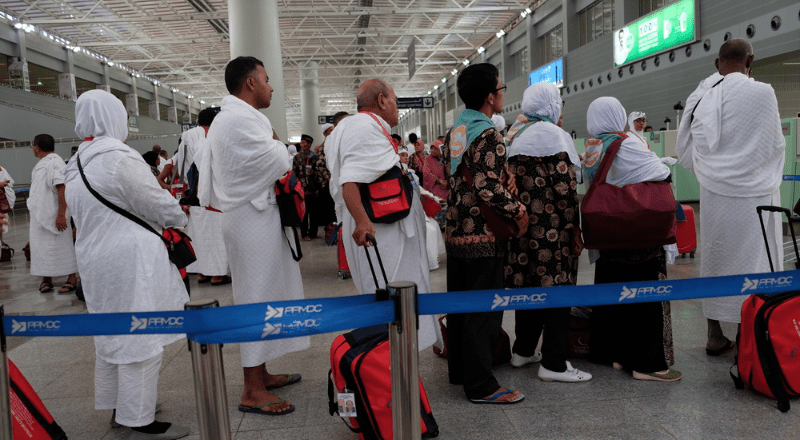The Story Behind Sa’i: History, Meaning, and Ritual Significance
Thousands of years ago, Allah commanded one of his beloved prophets to leave his wife and son in a barren valley of Makkah.
What happened next created a profound legacy, called the Sa’i, that millions of Muslims continue to relive and honor to this day when performing Umrah and Hajj.
Read on to discover what this ritual means, why it holds such significance, and what meaning we could derive from it in our lives.
What is Sa’i?
The literal word, Sa’i, comes from an Arabic word, which means “to strive” or “to walk.” When it comes to performing Umrah and Hajj, the word Sa’i refers to the act of walking back and forth, seven times, between the Safa and Marwa hills.
Muslims do so to remember the sacrifice of the Prophet عَلَيْهِ ٱلسَّلَامُ and the endurance of his wife. But whose sacrifice and endurance do Muslims still remember and follow as a ritual? Let’s discuss the history of the Sa’i.
The History of the Sa’i
The history of the Sa’i is rooted in the family of Hazrat Ibrahim عَلَيْهِ ٱلسَّلَامُ. When commanded by Allah, Hazrat Ibrahim عَلَيْهِ ٱلسَّلَامُ had to leave his wife, Hazrat Hajra رضي الله عنه, and their beloved son, Hazrat Ismail عَلَيْهِ ٱلسَّلَامُ, who was still an infant at that time, in a barren valley of Makkah with very few provisions.
Because Hazrat Ismail was still an infant back then, Hazrat Hajra رضي الله عنه had to nurse him and feed him breast milk. But soon, when the water ran out, she became thirsty and was failing to produce any milk for her son. Little Ismail عَلَيْهِ ٱلسَّلَامُ started to cry and was about to die. Then, Hazrat Hajra رضي الله عنه started her search for water. She ran between the Safa and Marwa hills seven times with a heart full of hope and tawakkal in Allah and His mercy.
At the end of her striving, Allah rewarded her patience, and water started to gush from the ground. This was a miracle of Allah. Hazrat Hajra رضي الله عنه drank from that water and fed her son. Later on, she dug a well around the spring of water, also known as Zamzam water, which became a source of life in Makkah, eventually drawing people to settle there and giving rise to the holy city.
This remarkable story was immortalized as the ritual of Sa’i, which has become an essential rite of the pilgrimage for both Umrah and Hajj, and it cannot be omitted.
Today, every pilgrim who walks between Safa and Marwa relives Hajar’s endurance, reflecting on her faith, patience, and the mercy of Allah that transforms hardship into relief.
The Meaning and Significance of Sa’i in Islamic Tradition
In Islamic tradition, Sa’i refers to the ritual act of walking or running between the Safa and Marwah hills during the pilgrimage of Hajj and Umrah.
Its significance is mentioned directly in the Qur’an:
Indeed, the Ṣafa and Marwah hills are among the symbols of Allah. Therefore, whoever makes the major or minor pilgrimage to the Sacred House, let them walk between the two hills. And whoever does good willingly, Allah is truly Appreciative, All-Knowing.
(Surah Al-Baqarah 2:158)
This verse confirms that walking between Safa and Marwa is an act of worship, tied to faith and sincerity. By performing Sa’i, Muslims remember the sacrifice and unwavering trust in Allah, reconnecting with a story of endurance that still inspires millions.
How to Perform Sa’i?
- Begin at Safa Hill while facing the Kaaba, and recite:
إِنَّ ٱلصَّفَا وَٱلْمَرْوَةَ مِن شَعَآئِرِ ٱللَّهِ ۞
Then say:
أَبْدَأُ بِمَا بَدَأَ اللهُ بِهِ. لَا إِلهَ إِلَّا اللهُ وَ اللهُ أَكْـبَر لَا إِلهَ إِلَّا اللهُ وَحْدَهُ لَا شَرِيكَ لَهُ، لَهُ المُلْكُ وَلَهُ الحَمْدُ وهُوَ عَلى كُلِّ شَيءٍ قَديرٌ، لَا إِلَهَ إِلَّا اللهُ وَحْدَهُ أَنْجَزَ وَعْدَهُ، وَنَصَرَ عَبْدَهُ وَهَزَمَ الأَحْزَابَ وَحْدَهُ
- Walk towards Marwa while remembering Allah.
- When you reach the green lights, walk briskly but gently. Remember, women should not run; only men should run.
- When you reach the Marwa Hill, stop, face the Kaaba, and make duas for yourself and the Ummah, praising Allah, the Almighty, just as at the Safa.
- Repeat this seven times; from Safa to Marwa counts as one, and Marwa to Safa counts as the next. Remember, if you start from Marwa hill, that will not be recorded, because the stride starts from Safa hill.
- After seven rounds are completed, the Sa’i will be completed at Marwa hill. May Allah accept the worship of every believer. Ameen
What lesson do we learn from the history of the Sa’i?
As Muslims living in the modern era, Sa’i reminds us that challenges, whether financial, emotional, or personal, can be overcome with determination and reliance on Allah. It teaches us not to succumb to despair but to keep moving forward with patience, resilience, and the realization that Allah never abandons His servants.



